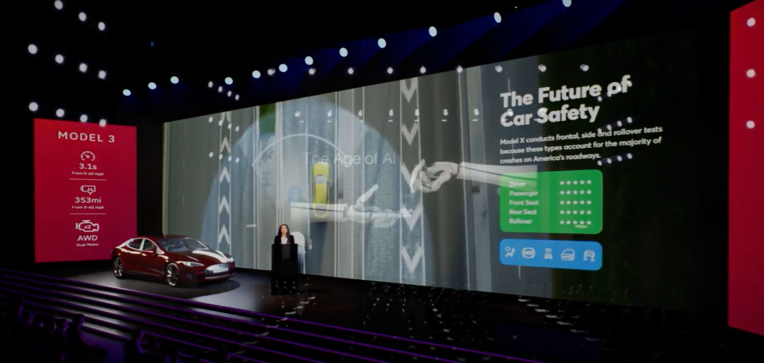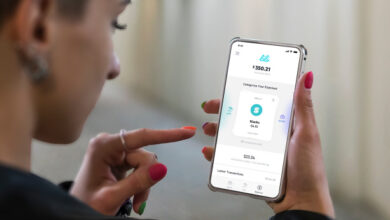TouchCast raises $55M to grow its mixed reality-based virtual event platform – TechCrunch

[ad_1]
Events — when they haven’t been cancelled altogether in the last 12 months due to the global health pandemic — have gone virtual and online, and a wave of startups that are helping people create and participate in those experiences are seeing a surge of attention — and funding.
In the latest development, New York video startup TouchCast — which has developed a platform aimed at companies to produce lifelike, virtual conferences and other events without much technical heavy-lifting — has picked up funding of $55 million, money that co-founder and CEO Edo Segal said the startup will use to build out its services and teams after being “overrun by demand” in the wake of COVID-19.
The funding is being led by a strategic investor, Accenture Ventures — the investment arm of the systems integrator and consultancy behemoth — with Alexander Capital Ventures, Saatchi Invest, Ronald Lauder and other unnamed investors also participating. The startup up to now has been largely self-funded, and while Segal isn’t disclosing the valuation, he said it was definitely in the nine-figures (that is, somewhere in the large region of hundreds of millions of dollars).
Accenture has been using TouchCast’s technology for its own events, but that is likely just one part of its interest: Accenture also has a lot of corporate customers that tap it to build and implement interactive services, so potentially this could lead to more customers in TouchCast’s pipeline.
(Case in point: My interview with Segal, over Zoom, found me speaking to him in the middle of a vast aircraft hangar, with a 747 from one of the big airlines of the world — I won’t say which — parked behind him. He said he’d just come from a business pitch with the airline in question.)
A lot of what we have seen in virtual events, and in particular conferences, has to date been, effectively, a managed version of a group call on one of the established videoconferencing platforms like Zoom, Google’s Hangout, Microsoft’s Teams, Webex and so on.
You get a screen with participants’ individual video streams presented to you in a grid more reminiscent of the opening credits of the Brady Bunch or Hollywood Squares than an actual stage or venue.
There are some, of course, that are taking a much different route. Witness Apple’s online events in the last year, productions that have elevated what a virtual event can mean, with more detail and information, and less awkwardness, than an actual live event.
The problem is that not every company is Apple, unable to afford much less execute Hollywood-level presentations.
The essence of what TouchCast has built, as Segal describes it, is a platform that combines computer vision, video streaming technology and natural language processing to let other organizations create experiences that are closer to that of the iPhone giant’s than they are to a game show.
“We have created a platform so that all companies can create events like Apple’s,” Segal said. “We’re taking them on a journey beyond people sitting in their home offices.”
Yet “home office” remains the operative phrase. With TouchCast, people (the organizers and the onstage participants) still use basic videoconferencing solutions like Zoom and Teams — in their homes, even — to produce the action. But behind the scenes, TouchCast is taking those videos, using computer vision to trim out the people and place them into virtual “venues” so that they appear as if they are on stage in an actual conference.
These venues come from a selection of templates, or the organiser can arrange for a specific venue to be shot and used. And in addition to the actual event, TouchCast then also provides tools for audience members to participate with questions and to chat to each other. As the event is progressing, TouchCast also produces transcriptions and summaries of the key points for those who want them.
Segal said that TouchCast is not planning to make this a consumer-focused product, not even on the B2B2C side, but it’s preparing a feature so that when business conference organisers do want to hold a music segment with a special guest, those can be incorporated, too. (In all honesty, it seems like a small leap to use this for more consumer-focused events, too.)
TouchCast’s growth into a startup serving an audience of hungry and anxious event planners has been an interesting pivot that is a reminder to founders (and investors) that the right opportunities might not be the ones you think they are.
You might recall that the company first came out of stealth back in 2013, with former TechCrunch editor Erick Schonfeld one of the co-founders.
Back then, the company’s concept was to supercharge online video, by making it easier for creators to bring in interactive elements and media widgets into their work, to essentially make videos closer to the kind of interactivity and busy media mix that we find on web pages themselves.
All that might have been too clever by half. Or, it was simply not the right time for that technology. The service never made many waves, and one of my colleagues even assumed it had deadpooled at some point.
Not at all, it turns out. Segal (a serial entrepreneur who also used to work at AOL as VP of emerging platforms — AOL being the company that acquired TechCrunch and eventually became a part of Verizon) notes that the technology that TouchCast is using for its conferencing solution is essentially the same as what it built for its original video product.
After launching an earlier, less feature-rich version of what it has on the market today, it took the company about six months to retool it, adding in more mixed reality customization via the use of Unreal Engine, to make it what it is now, and to meet the demand it started to see from customers, who approached the startup for their own events after attending conferences held by others using TouchCast.
“It took us eight years to get to our overnight success story,” Segal joked.
Figures from Grand View Research cited by TouchCast estimate that virtual events will be a $400 billion business by 2027, and that has made for a pretty large array of companies building out experiences that will make those events worth attending, and putting on.
They include the likes of Hopin and Bizzabo — both of which have recently also raised big rounds — but also more enhanced services from the big, established players in videoconferencing like Zoom, Google, Microsoft, Cisco and more.
It’s no surprise to see Accenture throwing its hat into that ring as a backer of what it has decided is one of the more interesting technology players in that mix.
The reason is because many understand and now accept that — similar to working life in general — it’s very likely that even when we do return to “live” events, the virtual component, and the expectation that it will work well and be compelling enough to watch, is here to stay.
“Digital disruption, distributed workforces, and customer experience are the driving forces behind the need for companies to transform how they do business and move toward the future of work,” said Tom Lounibos, managing director, Accenture Ventures, in a statement. “For organizations to harness the power of virtual experiences to deliver business impact, the pandemic has shown that quality interactions and insights are needed. Our investment in Touchcast demonstrates our commitment to identifying the latest technologies that help address our clients’ critical business needs.”
[ad_2]
Source link





